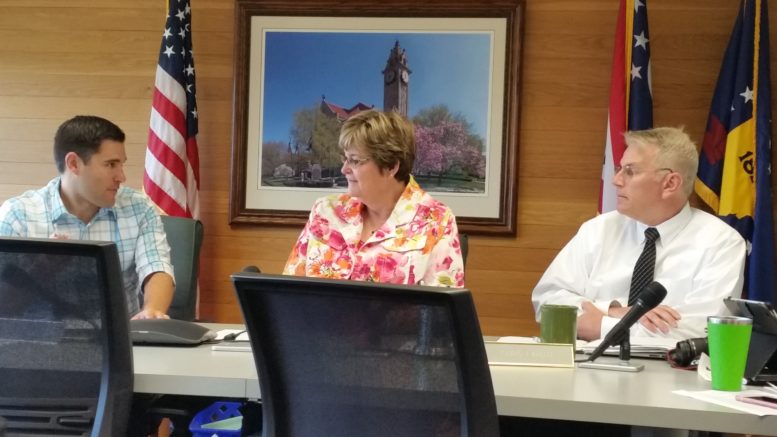By JAN LARSON McLAUGHLIN
BG Independent News
The future looks bright once again for the solar field planned by the city of Bowling Green.
Tuesday morning, the Wood County Commissioners approved the tax break requested for the largest solar field planned in Ohio. The approval came one day after the work at the site was scheduled to begin – since the commissioners refused to grant the 30-year tax abatement for the $43 million project until their questions were answered.
Though it took longer than hoped, the delay will not negatively impact the project which is set to be completed by the end of this year, said Daryl Stockburger, of the city’s utility department.
“At this point, the project can keep its schedule,” Stockburger said Tuesday after the commissioners met. “We are only a day behind.”
Bowling Green Mayor Dick Edwards said he understood the commissioners’ desire to get their questions answered. But he was also relieved that the project could now move forward.
“It’s a wonderful project,” Commissioner Craig LaHote said. “It would be a great gem to have here.”
But the commissioners refused to be rushed into approving the tax break. “We’ve had less than two months to look at it,” LaHote said.
“This abatement is unique,” he said. The county has granted tax breaks to private companies before, but this request is different in its size and duration, granting an exemption of $7.3 million over the first 15 years. Most tax abatements are based on the number of jobs created by a business. But this request differs there as well, since there will be no jobs beyond the construction period.
“It’s been hard for us to get numbers,” LaHote said. Consequently, it was difficult to weigh the impact of the tax abatement. “The more we looked into this, the more questions came up.”
LaHote said the delay on the tax abatement might have been avoided if the commissioners had been given more time to consider the request. “I wish we had been brought into the process a little sooner.”
Commissioner Doris Herringshaw also defended the time taken to review the request for the tax exemption.
“It has been difficult to get answers to all of our questions,” she said.
Commissioner Joel Kuhlman said the board likes to reference historical criteria when making decisions. But in this case, no criteria existed since this request is unlike most. “It’s being driven by a public entity,” but a private entity will profit, he said.
Last week, Bowling Green officials met with the commissioners to convince them of the need for quick action on the tax exemption.
“It put us in a bit of a rush,” Kuhlman said. “We are being put in a position that there’s almost an expectation that we approve this.”
It was made clear by city officials that without the tax break, the solar fields would not be built by NextEra and AMP. “So we do feel some pressure,” Kuhlman said.
However, by time they voted Tuesday, all the commissioners felt they had enough information to approve the project. “We can’t say we totally agree with everything,” but enough to approve, Herringshaw said.
The solar field is planned on 320 acres owned by the city of Bowling Green at the southeast corner of Carter and Newton roads. The city will retain ownership of the land and lease 165 acres for the solar development. The remaining acreage will continue to be leased for farming.
The solar array will consist of 85,680 panels that will track the sun from east to west everyday for maximum power generation.
One other concern about the Bowling Green project was that the solar array will be built using panels from Hanwha – not First Solar, which is located in Wood County. NextEra Energy has used First Solar panels in many projects, but is not planning to at the 18 sites proposed in Ohio.
LaHote said he has asked State Senator Randy Gardner, R-Bowling Green, to add requirements to similar tax abatement conditions that would require Ohio-based goods to be used in the projects.
“It wouldn’t affect this project,” LaHote said. But it would be a nice trade-off since the energy project doesn’t produce jobs. “It would help protect those jobs that are already here.”
There are 26 proposed solar array sites in AMP member communities across five states. Six of those sites, including Bowling Green’s, are planned to be completed by the end of 2016.

